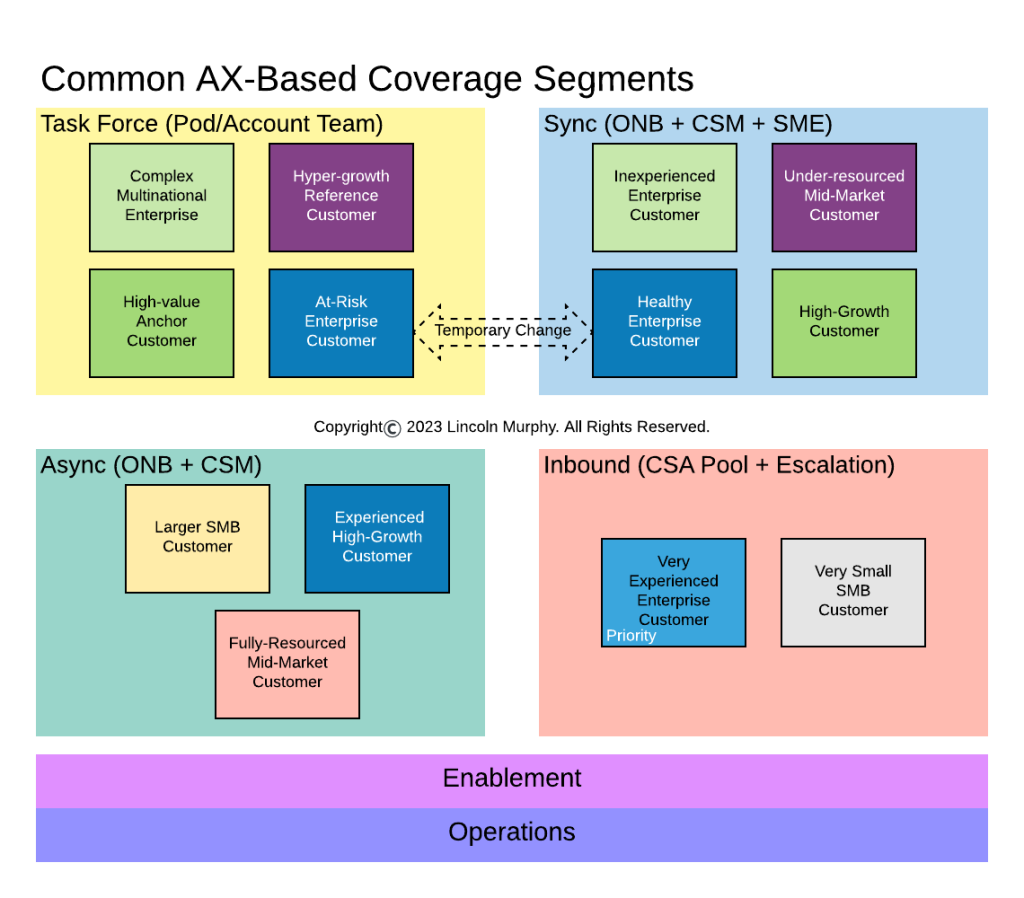
The concept of “pods” in Customer Success Management (CSM) continues to evolve, offering a flexible approach to structuring CSM teams within an overall coverage model strategy.
Here’s a breakdown of how pods can fit into your CSM coverage models:
The Core Concept of Customer Success Pods
At its core, a pod is a cross-functional team within a CSM organization. It typically consists of Customer Success Managers (CSMs), but may also include specialists from other departments such as:
- Technical Account Managers (TAMs): Provide technical expertise and support.
- Onboarding Specialists: Assist with customer onboarding and initial product adoption.
- Solutions Architects: Offer solution design and implementation guidance.
Pod Structures and Coverage Models

Pods play a key role within your chosen Coverage Model, a framework that defines how resources are allocated to best serve customer segments based on their Appropriate Experience (AX). There are two main pod structures that align with different coverage models:
- Account-Based Pods (AB Pods, or Task Force or Account Team) for High-value or Complex Segments: Ideal for Coverage Models focused on dedicated ownership. Each pod is dedicated to a specific set of accounts, fostering deeper customer relationships and specialized knowledge. This aligns well with customer segments requiring a high-touch, relationship-focused AX.
- Skill-Based Pods (SBPs) for Scalable Segments: Ideal for Coverage Models focused on shared ownership. Pods are formed based on specific skill sets, such as industry expertise or product specialization. This allows for efficient allocation of resources across a larger customer base and ensures customers receive the right expertise regardless of their specific account team. This aligns well with customer segments requiring a more scalable, self-service or async-heavy AX.
Hybrid Pod Models for Flexibility
Many organizations are adopting hybrid pod models that combine elements of both AB Pods and SBPs. This allows for greater flexibility and customization based on individual customer needs and team composition. For example, a Coverage Model might utilize:
- AB Pods for high-value enterprise customers requiring dedicated CSM ownership and deep product expertise.
- SBPs for mid-market customers with a mix of self-service needs and occasional high-touch interactions requiring industry or product specialization.
Key Considerations for Pod Implementation
- Customer Needs: Align pod structure with the specific AX requirements of your customer segments.
- Team Size and Skill Sets: Ensure pods have the right mix of experience and expertise to support assigned customers.
- Communication and Collaboration: Clear communication is crucial within pods, across pods, and with other departments.
The Future of Pods in Customer Success Management
As CSM practices evolve, we can expect further refinement of pods within coverage models:
- Dynamic Pod Composition: Pods might adapt their composition based on real-time customer needs, leveraging technology and automation to optimize resource allocation.
- The Rise of AI: AI-powered tools can assist pods by automating routine tasks, providing data-driven insights, and facilitating proactive customer engagement.
- Metrics-Driven Optimization: Organizations will increasingly track pod performance using relevant metrics to continuously optimize pod structure and resource allocation within the chosen Coverage Model.
By understanding the role of pods within CSM coverage models, you can design a structure that optimizes team effectiveness, delivers exceptional customer experiences, and caters to the specific AX requirements of your diverse customer segments.



